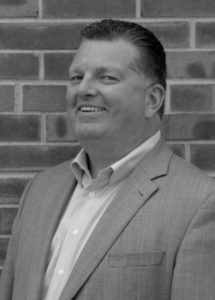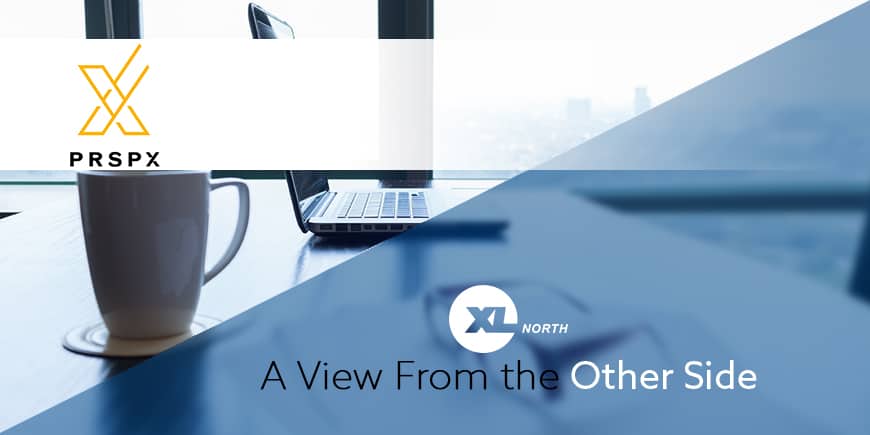
Lance explains there’s a dual meaning to the company name, “The act of prospecting is finding opportunities, and we do a lot of that in sales, but you also have to think about new talent, or prospects, like on a baseball or hockey team.” PRSPX helps clients like Turner Construction, Dallas Cowboys, New York Yankees and the 2016 NBA Champion Cleveland Cavaliers with sales training, sales leadership and sales acceleration.
On Budget:
“The words budget, cost, price and value are probably used interchangeably, but they never mean the same thing.”
Sales in the flooring industry can be a challenge. Why is that? Lance notes that it’s an incredibly competitive marketplace. With a multitude of product and service providers, usually budget seems to be the determining factor for gaining new business. “The words budget, cost, price and value are probably used interchangeably,” Lance explains, “but they never mean the same thing.” Often, budget can mean a number, but it can also represent a decision-making process/committee or a timeline. Lance points out that salespeople need to dig a bit deeper to discover what the client really means when they say “It’s not in the budget.” He asks, “Do they mean cost by that? Or do they mean price? It’s our job to find out.”
How is cost different than price? Lance explains, “With a car, the cost is the tires, the brakes, the insurance, the risk.” If a customer’s objection is cost, perhaps they feel doing business with you means more risk or more work for them. As for price, it’s driven by the marketplace. “The price is the price,” Lance states, “and as a salesperson, we’ve got to understand what we’re dealing with.”
Beyond budget, cost and price, there’s one other marketplace-driven objection – value. “Value is perceived,” Lance notes, “and we can only value what we can compare and contrast.” He mentions recent studies show a salesperson’s level of engagement during the sales process can offer some perspective to the client as to how valuable an organization will be as a vendor.
We often hear that sales is about relationships, but Lance challenges that notion. “Is it about relationships,” he asks, “or is it about professional rapport?“ He notes that selling, really, hasn’t drastically changed. “People buy from people they like, trust and respect. People buy from people.”
When asked how technology has altered the profession of selling, Lance states, “To sell is human. If we could have figured out technology to take over the sales job, we would have figured that out 10 years ago, 20 years ago.” He also points out that sending is not selling. “You can’t resolve an objection through one-way communication. And that’s what a lot of technology is,” Lance states. “Social selling is not a rapport-building tool. It’s an acknowledgement tool.”
On Technology & Sales:
“Social selling is not a rapport-building tool. It’s an acknowledgement tool.”
Perhaps you missed your sales mark for the first half of this year. Lance suggests taking a look at your pipeline and reconsidering how you approach it to improve the second half. He points out that activity fills the pipeline. “Ask yourself if you’re having meaningful interactions with customers that create a buying environment versus a selling environment,” Lance recommends. He asks, “Would people rather buy or be sold to?”
Lance also advises that you know your numbers. How many touches (emails, social connections, phone calls) does it take to get time on someone’s calendar? He states that, across multiple industries, it takes 118 dials to nail down an appointment. That can be 2-3 days of work. He emphasizes, “It’s important to realize if you’re not willing to go through that type of persistence, you’ll have a high failure rate.”
As for customers that want a quote or a bid and nothing more? Lance explains, “There’s no selling there. If you can’t even engage with a potential customer, you can’t create a distinct advantage and then you are going to be dead to price.”
Lance’s must read for anyone in the sales profession is a speech given by Albert E.N. Gray entitled “The Common Denominator of Success.” In the speech, Gray notes that successful salespeople form the habits of doing things that unsuccessful salespeople don’t like to do. He notes that unsuccessful salespeople are more interested in pleasing methods, while successful salespeople are more concerned with pleasing results. “Every single person that we hire, that’s the first thing they read,” Lance reveals, “It seems to resonate with everybody.”
PRSPX means two things: opportunity and high-end talent.
www.prspx.com
Twitter: @lancetyson
Email: lance.tyson@prspx.com
PRSPX roots are in the development of sales professionals and revenue streams alike. Faced with the realization that most of our clients were operating under a scarcity of new business opportunities, we expanded our consultative expertise to include a hands-on business development service, that we call Demand Generation. Clients soon began to consider us a key driver for their sales cycle and an accelerant of their revenue stream.
Our mission is to defy norms, push limits and deliver measurable results through sales intelligence, sales lead acceleration, demand generation, and sales strategy and training.
